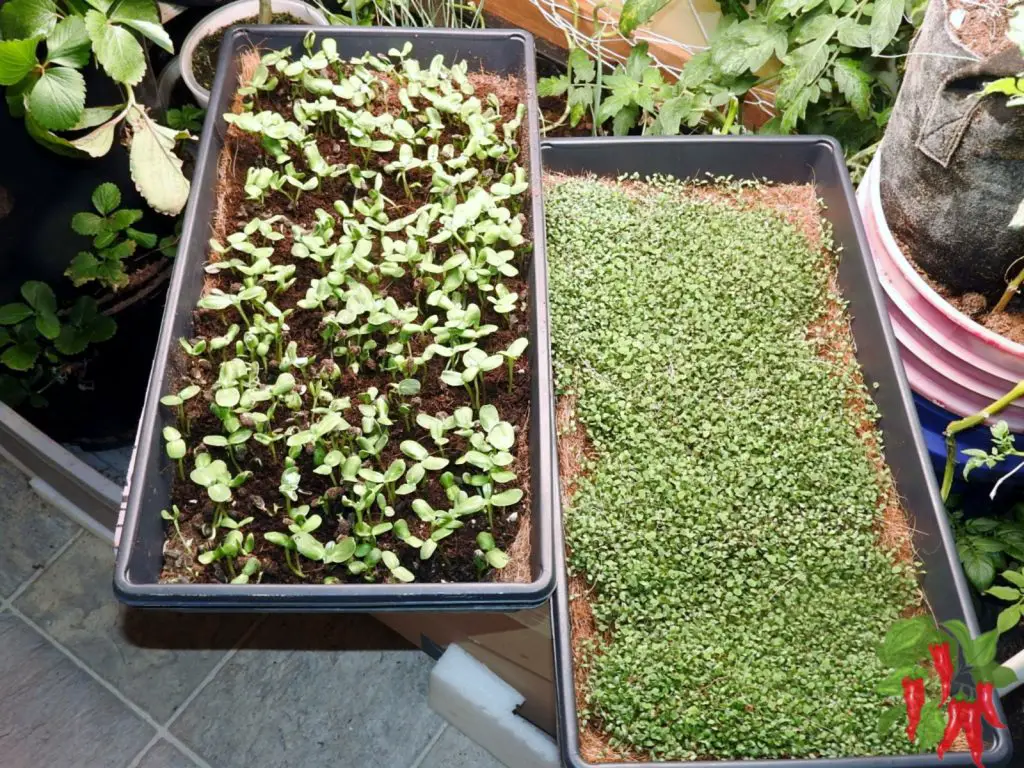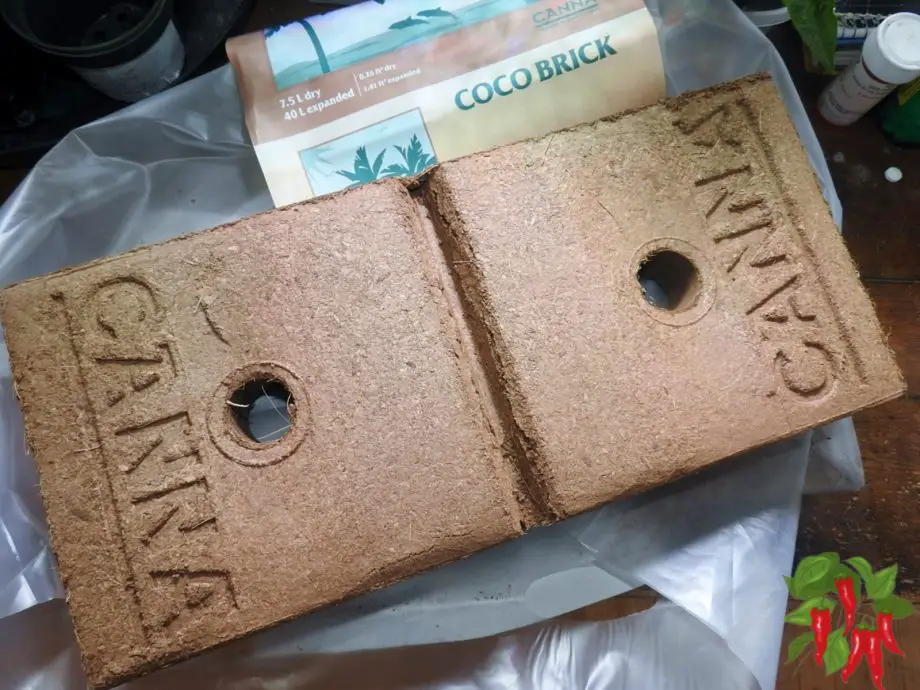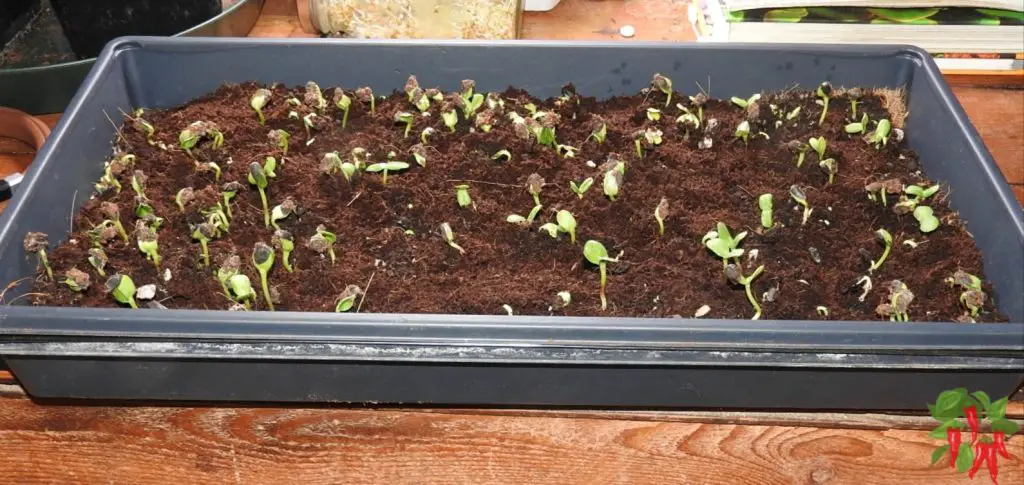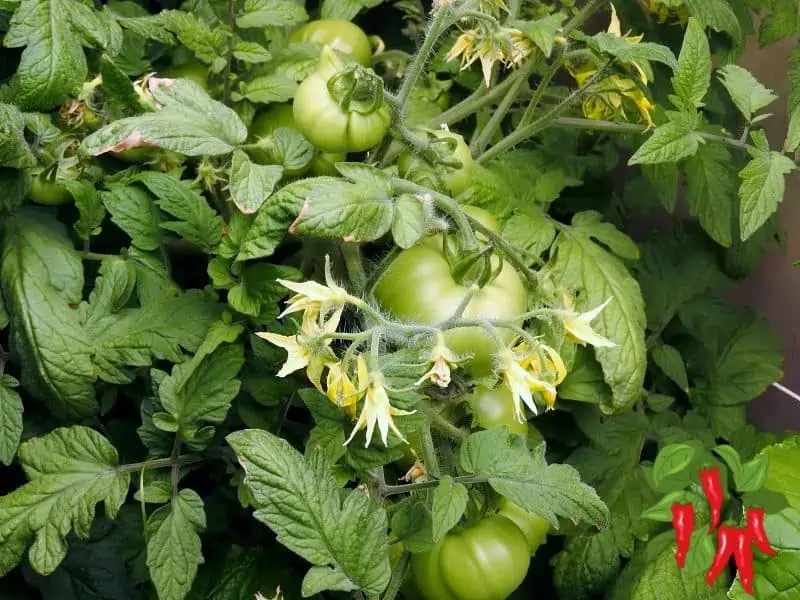This post may contain affiliate links. If you buy something from one of our links we may earn a commission. Thanks

If you’re looking for a simple and affordable way to add some nutrition and flavor to your meals, learning how to grow sunflower microgreens might be the perfect solution.
These delicate greens are easy to grow at home and offer a wealth of health benefits that make them a valuable addition to any diet.
Whether you’re an experienced gardener or just starting out, sunflower microgreens are a great choice for anyone looking to add some flavor and nutrition to their meals.
In this guide, we’ll show you how to grow sunflower microgreens in just a few easy steps, so you can enjoy the taste and benefits of these tasty greens all year round.
What Do Sunflower Microgreens Taste Like?
Sunflower microgreens have a nutty and slightly sweet taste, similar to that of sunflower seeds.
They can be eaten raw or added to a variety of dishes for a burst of flavor and nutrition.
Sunflower microgreens are a good source of vitamins and minerals, including vitamin C, vitamin E, and potassium.
They can be used in salads, sandwiches, smoothies, and as a garnish for soups and other dishes. They can also be sprouted and eaten as a snack or added to dips and spreads.
Sunflower microgreens offer a crunchy texture and a mild, delicate flavor that adds a unique twist to any dish.
How To Grow Sunflower Microgreens In 7 Easy Steps
Before you get started the first step is to gather all your materials. You will need sunflower seeds, seed propagation trays, a growing medium and a grow light if you are growing during the winter months.
Step 1: Gather Materials And Buy Your Seeds And Trays
Choose the right type of sunflower microgreen seeds. Make sure to buy organic seeds that are non-GMO.
The recommended variety for microgreens is organic black oil sunflower seeds.
If you’re not sure where to start, it’s a good idea to purchase high-quality organic sunflower seed for microgreens.
Don’t use sunflower seeds sold for human consumption at the grocery store.
Seeds sold as bird feed are often sterile and some other seeds may be treated with fungicides.
You can buy black oil sunflower seeds here. This will ensure that you’re getting healthy, chemical-free seeds that are perfect for growing.
 Step 2: Prepare Your Growing Trays
Step 2: Prepare Your Growing Trays
I recommend using a 2 tray system that allows for bottom watering and catching excess water.
 You will want a tray with drainage holes to hold your growing medium.
You will want a tray with drainage holes to hold your growing medium.
You will want a second tray without holes that you will fill with some water and use to bottom water your top tray.
1020 seed propagation trays are perfect for growing microgreens. Trays from Bootstrap Farmer are very strong and won’t crack on you as cheaper trays will.

When it comes to planting seeds, it’s important to use a soil-less growing medium such as peat moss or coconut coir.
These types of mediums are light and well-draining and provide a good environment for the seeds to germinate and grow.
Fill a seed tray or shallow container with a soil-less growing medium, such as peat moss or coconut coir.
I really recommend using coco coir over peat or peat-based soil mixes.
Why Coco Coir Is A Better Choice Than Peat
Coco coir is made from the outer husk of coconuts and is a sustainable alternative to peat moss, which is a non-renewable resource.
It is available loose or as coco coir bricks that you soak to rehydrate.

Peat moss is harvested from peat bogs, which are ecosystems that take thousands of years to form.
The harvest of peat moss has a negative impact on these ecosystems and contributes to their destruction.
In addition, peat moss is very acidic and can lower the pH of the soil, which can be detrimental to some plants.
On the other hand, coco coir is a neutral pH substrate that is well-suited for a wide range of plants.
It is also highly absorbent, which helps to retain moisture in the soil and reduces the need for frequent watering.
Coco coir is also resistant to compaction, which allows it to support the growth of root systems.
In addition, coco coir is a renewable resource and can be produced sustainably without damaging ecosystems.
 Overall, coco coir is a better choice than peat moss because it is a more sustainable and environmentally friendly option that is also well-suited for growing a variety of plants including microgreens.
Overall, coco coir is a better choice than peat moss because it is a more sustainable and environmentally friendly option that is also well-suited for growing a variety of plants including microgreens.
Too much work? Here is how to grow microgreens without soil.
Step 3: Soak The sunflower Seeds
Once you’ve chosen your seeds, it’s time to start the germination process.
Soaking the seeds in water for 6-12 hours before planting can help them germinate faster and more evenly.
Soaking will make it much easier for the seed hulls to come off.
You can do this by filling a mason jar with cool water and adding the seeds, then covering the jar with a lid or plastic wrap and leaving it at room temperature for a few hours.
Water The Growing Medium
You will want to bottom water your growing medium before planting your seeds. Fill the bottom tray partially with water and place the top tray into it and allow it to soak up the water.
Once your soil is moist empty the bottom tray and drain off any excess water. You don’t want your top tray sitting in standing water.
Step 4: Plant The Seeds
The seeds have absorbed the water and will begin to sprout, creating small sunflower shoots that are ready for planting.
Scatter the soaked sunflower seeds evenly over the growing medium, making sure to leave enough space between them for proper growth.
Cover the seeds with a thin layer of soil or growing medium, and water lightly with a misting bottle. Place an empty seed tray on top of the tray holding your seeds.
They should start to germinate in a couple of days.
As the sunflower microgreens grow, you’ll start to see sprouting seeds with small green leaves emerging from the soil.
Step 5: Place The Tray In A Sunny Location
Once the seeds are planted, it’s important to give them the right amount of light and moisture to help them grow.

Sunflower microgreens need plenty of sunlight to thrive, so it’s best to place the tray in a sunny spot or under grow lights.
If you don’t have access to direct sunlight you can use an LED grow light.
Step 6: Water The Seeds Regularly
Water the microgreens regularly, being careful not to overwater or let the soil dry out completely.
It’s a good idea to keep an eye on the moisture level of the soil and make sure it’s not too dry or too wet.
You can check the moisture level by sticking your finger into the soil and if it feels dry about an inch down, it’s time to water.
Too much water can lead to rot, while dry seeds won’t germinate properly.
A spray bottle can be a useful tool for watering the microgreens, as it allows you to control the amount of water you’re applying.
You should also make sure the tray has drainage holes to allow excess water to drain away.
Step 7: Harvest And Enjoy The Sunflower Microgreens
When the sunflower microgreens are about 2-3 inches tall, with green leaves and sturdy stems, they are ready to harvest.
Usually, this will be within 10-14 days of planting.
Harvest just as the true leaves of the sunflower plant start to show. They indicate that the microgreens are ready to harvest.
Use sharp scissors to cut the sunflower greens just above the soil level. Sunflower microgreens do not grow back after cutting.
The sunflower microgreens are now ready to enjoy! You can use them raw in salads, sandwiches, and other dishes, or use them as a garnish to add some color and flavor to your plates.
What Are The Benefits Of Growing Sunflower Microgreens?
Are you looking for a quick and easy way to add some nutrition and flavor to your meals? Sunflower microgreens might just be the answer.
Sunflower microgreens are a nutritious and flavorful addition to any diet, and they have a number of benefits that make them worth growing at home.
Disclaimer: I am not a physician and don’t play one on TV either. The material on this site is not a substitute for professional medical advice, diagnosis, or treatment. Always seek a physician’s advice before using any information you find on this website to treat or prevent any condition.
Some of the key benefits of growing sunflower microgreens include:
• Nutrient-rich: Sunflower microgreens are packed with nutrients, including vitamins A, C, and E, as well as essential amino acids.
These nutrients can help support healthy immune function, vision, and skin health, among other things.
• Convenient: Sunflower microgreens are easy to grow and don’t take up much space, making them a convenient choice for those who are short on room or time.
They can be grown in small trays or containers, and are ready to harvest in just a couple of weeks.
• Delicious: Sunflower microgreens have a sweet nutty flavor that adds a tasty twist to salads, sandwiches, and other dishes.
They also have a crunchy texture that adds a bit of interest to your meals.
• Versatile: Sunflower microgreens can be used in a variety of dishes, from salads and sandwiches to garnishes and decorative elements on plates and platters.
They are versatile ingredients that can be used in many different ways.
• Easy to store: Sunflower microgreens can be stored in the refrigerator for a few days after harvesting, making them a convenient choice for those who want to have a supply of fresh greens on hand.
Overall, sunflower microgreens are a healthy and tasty addition to any diet, and they are easy to grow at home with just a few simple steps.
Whether you’re an experienced gardener or just starting out, sunflower microgreens are a great choice for anyone looking to add some flavor and nutrition to their meals.
What Is The Nutritional Value Of Sunflower Microgreens?
Sunflower microgreens are a nutritious addition to any diet, as they are packed with a variety of essential nutrients. Some of the key nutrients found in sunflower microgreens include:
• Vitamins A, C, and E: Sunflower microgreens are rich in vitamins A, C, and E, which are important for immune function, vision, and skin health, among other things.
• Essential amino acids: Sunflower microgreens contain essential amino acids, which are the building blocks of proteins that are necessary for the proper functioning of the body.
• Fiber: Sunflower microgreens are a good source of fiber, which can help support healthy digestion and prevent constipation.
• Minerals: Sunflower microgreens contain a variety of minerals, including magnesium, potassium, and zinc, which are important for maintaining good health.
• Phytochemicals: Sunflower microgreens are rich in phytochemicals, which are plant-based compounds that have been shown to have a number of health benefits.
A 100 g servingTrusted Source of sunflower and basil microgreen mix will provide:
28 calories
2.2 g of protein
4.4 g of carbohydrate
2.2 g of fiber
88 milligrams (mg) of calcium
15.9 mg of iron
66 mg of magnesium
66 mg of phosphorus
298 mg of potassium
11 mg of sodium
0.7 mg of zinc
6.6 mg of vitamin C
79.6 micrograms (mcg) of vitamin A
66 mcg of folate
The greens also contain selenium, manganese, and a range of B vitamins. https://www.medicalnewstoday.com/articles/316075
Overall, as you can see sunflower microgreens are a nutritious addition to any diet, and they can help support a variety of health benefits. They are a great choice for anyone looking to add more nutrients to their meals.
Final Thoughts
Whether you’re an experienced gardener or just starting out, sunflower microgreens are a great way for anyone looking to add some flavor and nutrition to their meals.
Sunflower microgreens are a great addition to any diet, as they are rich in vitamins A, C, and E, as well as essential amino acids.
They also have a crunchy texture that adds a bit of interest to your meals. Plus, sunflower microgreens are easy to grow and don’t take up much space, making them a convenient choice for those who are short on room or time.
Here Is A Quick Recap On How To Grow Sunflower Microgreens:
Growing sunflower microgreens is a simple process that can be done in just a few easy steps.
All you need is a tray, some soil-less growing medium, and a good quality sunflower microgreen seed.
Soak the seeds in water for 6-12 hours to kickstart the germination process, then scatter them evenly over the growing medium.
Cover the seeds with a thin layer of soil or growing medium, and water lightly.
Place the tray in a sunny spot, or under grow lights if you don’t have access to direct sunlight.
Water the microgreens regularly, and harvest when they are 2-3 inches tall in about 10-14 days.
Overall, growing sunflower microgreens is a fun and rewarding activity that can provide you with a steady supply of nutritious and tasty greens.
Whether you’re an experienced gardener or just starting out, sunflower microgreens are a great choice for anyone looking to add some flavor and nutrition to their meals. So why not give it a try and see what all the fuss is about?
Learn more: Growing Microgreens Inside: Complete Beginners Guide
Visit my Amazon Influencer Page for videos and gardening products Grow Your Own Garden







